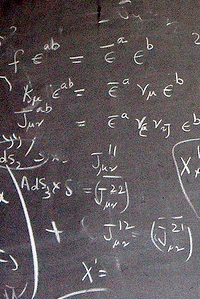 Let’s start with a few definitions within mathematics and logic. An axiom or postulate is a proposition (statement) taken as a given. A lemma is an intermediate proposition or stepping stone rather than the final result, which is a theorem. A corollary follows readily from a theorem—it’s often simply another way of stating the theorem. Lemmas, theorems, and corollaries are all proven, but proofs are only possible within mathematics and logic, not within science.
Let’s start with a few definitions within mathematics and logic. An axiom or postulate is a proposition (statement) taken as a given. A lemma is an intermediate proposition or stepping stone rather than the final result, which is a theorem. A corollary follows readily from a theorem—it’s often simply another way of stating the theorem. Lemmas, theorems, and corollaries are all proven, but proofs are only possible within mathematics and logic, not within science.
By contrast, all scientific statements are provisional. A scientific hypothesis is a testable explanation for a phenomenon. It explains and predicts. Once a hypothesis has proven itself, it becomes a scientific theory. A scientific law is a description of a natural phenomenon, often an equation. Laws and theories are both well-tested, widely or universally accepted within the field, and falsifiable. The main difference is that a theory explains while a law describes.
For example, germ theory, quantum theory, and the theory of evolution are explanations. Boyle’s law, Ohm’s law, and Newton’s law of gravity are all descriptions (and are all equations).
A common misconception is that scientific hypotheses mature to theories, which mature to facts or laws. Instead, facts (the observations from an experiment, for example) lead to hypotheses (a plausible but immature explanation), which lead to theories (well-evidenced explanations). In the category of scientific explanations, a theory is as good as it gets and it doesn’t graduate to become a law.
Photo credit: Marvin (PA)
Related posts:
- See all the definitions in the Cross Examined Glossary.
Related links:
- “Scientific Laws and Theories.”
- “Scientific Hypothesis, Theory, Law Definitions,” About.com.
